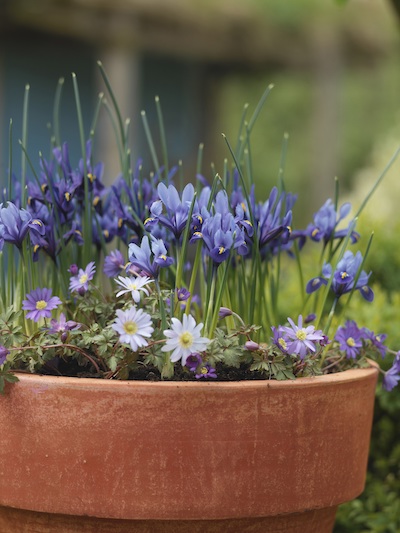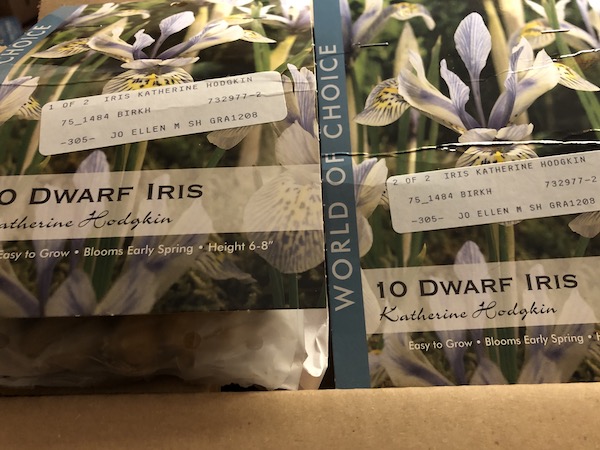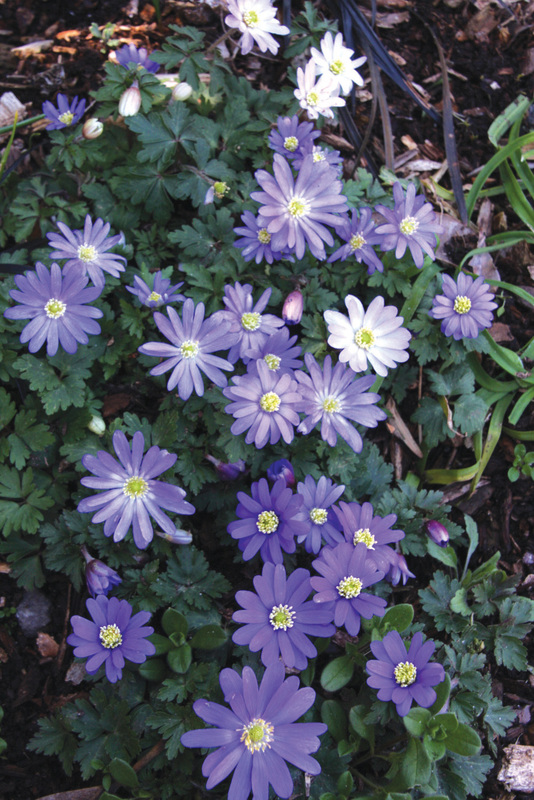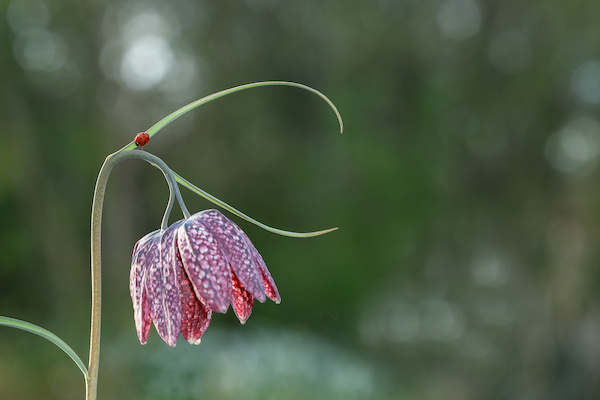
We should all be grateful for the lovely rains we’ve had recently, especially after an exceptionally dry fall that hoisted red flag fire warnings in the state. We worried about the moderate drought ranking and our plants.
The rain softened the soil, making it easier to dig and divide perennials and plant bulbs.
This year, I’m planting yellow daffodils in areas that looked a bit blank when I videoed the beds in spring. And, I bought ‘Katharine Hodgkin’ bulbs to add to my dwarf irises.
Dwarf iris

Only a few inches tall, the dwarf irises will be planted where they will bloom near the blotchy, ground-hugging spring leaves of hardy cyclamen (C. hederifolium). This cyclamen blooms late summer into fall in shady locations, but the leaves don’t appear until spring.
In this bed are hosta, Brunnera and coral bells (Heuchera spp.). The irises will also be a good addition to the few daffodils (Narcissus spp.) and tulips (Tulipa spp.) planted there.
Dwarf irises are reliable in Indiana, and there are several species and colors to choose from. Iris reticulata is probably one of the most well known and it was the first dwarf iris I planted at least 20 years ago. They greet me ever spring along the edge of the driveway. They have a light fragrance and can be snipped to make beautiful tiny bouquets for indoor enjoyment.
Dwarf iris bulbs can be found in garden centers and from online retailers. Plant them about 4 inches deep in a sunny space and water them well. They bloom fairly early and it’s always a little bit of a race between the dwarf iris and crocus in my landscape.
Wind anemone

Another favorite small-bulb wonder is Grecian windflower, also called wind anemone (A. blanda). The daisy-like flowers are white or shades of pink and blue. Another early bloomer, they are ephemeral, so they clean up after themselves and you’d never know they were there.
Because they are short, plant them were you can see them. Plant them in a space about 4 inches deep in a sunny or partly sunny space. Plant them in clumps or clusters amid perennials, or as a spring-flowering carpet under trees or shrubs.
Guinea hen flower

Also known as snake head lily or checkered lily (Fritillaria meleagris), this little beauty looks like all of those common names. Plant about 5 inches deep in light shade or dappled sun. They bloom in April and May and get about 8 to 10 inches tall.
How to plant small bulbs
For small bulbs or corms, jam a garden knife or trowel in the soil and push it forward, drop in the bulb, remove the tool and push the soil back.
Or you can dig a larger planting hole the desired depth and place several bulbs. Cover with the soil taken from the hole and water.
Many of these smaller bulbs do well in pots. Buy the bulbs but chill them for several weeks, then pot them up.